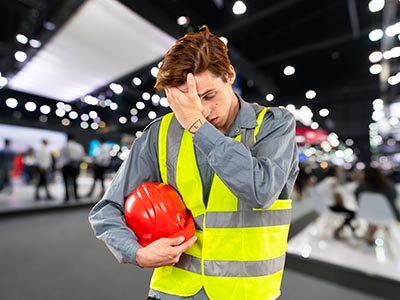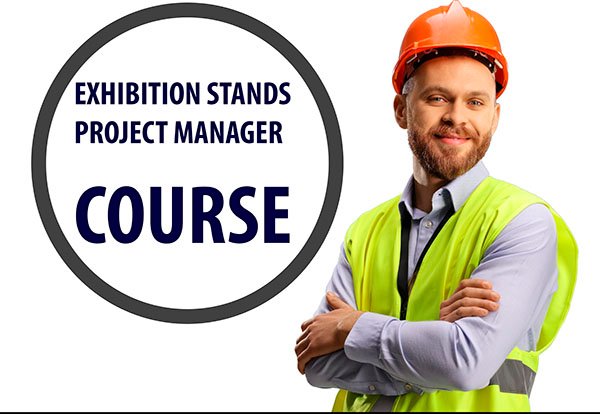How to prevent the worst scenario in the assembly of a stand
When you decide to participate in a fair, you decide to expose your company and your product to the eyes of your sector and your consumers. You should keep in mind that the first thing attendees at the fair will see will be your stand. For this reason, you must take many precautions to ensure a good finish. At the same time, you also need to ensure that your product is displayed in optimal conditions and that it is transported from one place to another efficiently and safely. Let's review the most common risks and what you can do to prevent them.


Worst scenario 1:
Your builder doesn't finish the booth on time and the show starts with the unfinished booth.
What can you do to avoid it?
- 1 Demand that the budget you have been given has a penalty for late completion.
- 2 Make sure in the contract that your builder will arrive at the fair on the first day of assembly (sometimes they come from other fairs and start later).
- 3 Follow the assembly! Do not neglect it and ask for photos every day to see the progress.
- 4 Do not choose the cheapest quote!

Worst scenario 2:
You have sent a product in your supplier's truck and it has arrived damaged.
What can you do to avoid it?
1- First of all: sending your product together with the wood for the stand is not a very good idea. Loading and unloading at the fair is quite abrupt and is often carried out by external companies since the assembler cannot do it himself. If you can avoid it, make a shipment on your own.
2- Hire insurance: transport companies offer insurance that guarantees payment in case of breakage or loss of your merchandise. Here's an example:
https://www.seur.com/es/empresas/servicios-disponibles/servicios-complementarios/
3- If it has already happened and you have not been able to avoid it, my advice is: detail the damage on the delivery note, and keep a copy. Then you have to claim the transport company up to 7 days after receipt (check the claim deadlines for each company). In case of not reaching an agreement you have to resort to the transport arbitration board of your country.
4- Detail as much as possible the material you are sending so that your builder can add it to the bill of lading of your transport company.
5- Pack the products very, very well… both going to and from the fair. Do not trust third parties for uploading and downloading the material.

Worst scenario 3:
Product stolen from support during assembly or disassembly
What can you do to avoid it?
This usually happens when the material is left unattended in the halls of the fair. You will arrive at the stand on the last day, but your brochures or machinery may arrive earlier, if they have not been transported by the manufacturer.
- 1- The solution is: pay for storage at the fair to keep your product safe until the last day of the fair or when you need to install it
- 2 -In case you need to leave it unattended at night, you can hire security at the fair (a security guard who will be with your product at night, or during the day if you need it).

Worst scenario 4:
Your builder refuses to dismantle your stand due to a disagreement
What can you do to avoid it?
It is very important that you verify that the contract with your builder does not include this possibility. In case of economic disagreement (you refuse to pay the remaining amount at the end of the fair because there have been errors) You have to know that there is always the possibility that in an extreme situation the builder decides not to disassemble and the problem is that the fair will fined for each additional day that the stand remains at the fair.

Worst scenario 5:
The fair does not authorize access to your stand/second floor/structure due to non-compliance with the regulations
What can you do to avoid it?
This is one of the worst case scenarios! Luckily you have this guide that will help you take the necessary precautions when it comes to fair services.
That being said, to prevent this from happening, you need to closely monitor the hiring process and take care of any necessary trade show approvals.
Some of these points that you should keep in mind are:
- Respect the height of the buildings
- Respect the setback established by the fair with respect to the adjoining stands using elements that exceed the maximum height allowed.
- Send the project on time to the organization of the fair to obtain the approval visa, it is essential to have this visa;
- Send the static calculations of the structure in case of a complex structure (This is determined by the fair).
- Submit all completed fire hazard and prevention forms before the deadline.
- Submit a safety plan if necessary
among others… You can check the following post for more information.

Worst scenario 6:
A worker from your supplier has suffered an accident at the fair
What can you do to avoid it?
- 1- Unfortunately, it is unavoidable, as long as your provider respects the security regulations. First of all, make sure that you do not use ladders for work at height, but rather scaffolding. It is also important that operators wear a helmet, regulatory footwear and reflective vests
- 2- You have to ask your provider for their civil liability insurance before the fair. If it does not have it, it is possible that your company is the one that receives the demand. The insurance must be valid for the date of the fair and cover both the national and international (European) scope.
Many, many more things can happen, but we understand that common sense and statistics are on your side. I think by checking these steps you are more or less covered.
Don't miss the next chapter of this exciting adventure!
I hope this post is useful to you. The following article will interest you for sure, since it talks about what you are going to spend at your next fair. If I were you, I would at least take a look ;): How much does it cost to participate in a fair?





